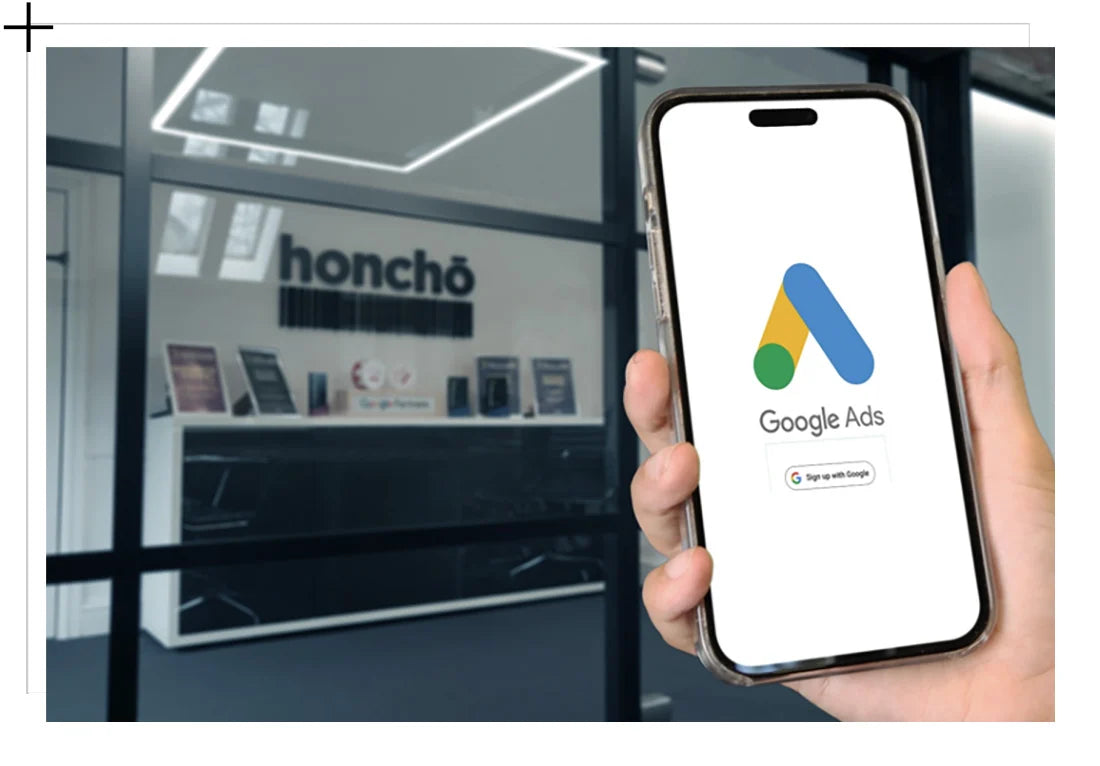
Honchō Takes Home Gold and Silver at the European Search Awards
In May, our Digital PR team jetted off to Krakow, and we’re pleased to say we left some room in our suitcases as we flew home with not one, but...








With ever changing algorithms and advances in AI and Machine Learning, SEO and Paid Search are best left to the hands of professionals.
That’s where we come in..




Luisa Pasquino - SEO & CRO Manager - SephoraIt's been such a pleasure working with Honcho for the Sephora UK launch. The wealth of knowledge shared has been invaluable due the complexity of the migration.
The team's positive attitude and always on-hand support helped us to drive the project over the line, despite some unforeseen challenges!
Jamil Kassam - DTC Lead - Roberts RadioThe Honchō team was an excellent support throughout Q4, our busiest time of the year. Through strategic search, shopping and social campaigns, Honchō helped us to achieve some fantastic results. We’re excited to continue our partnership with the team.
James Wilson - Senior Brand & DTC Director - AriatWe love working with Chris and the Honchō team, after 6 years their team and ours continue to get closer and more granular on how we can improve our Consumer acquisition and awareness. It’s great working with people with the same growth mindset but even better when the results follow, which they consistently do.“
Saad Usman - Chief Operating Officer - Miniso UKWe are thrilled with the results achieved through our partnership with Honchō. Their expertise in ecommerce strategy and Magento development has completely transformed our online presence.
Honchō's data-driven approach to SEO and focus on user experience have been instrumental in driving significant growth for MINISO's online sales.

Our Organic Performance proposition uses SEO, Content and Digital PR to reach new online audiences and convert them into customers.

As a Google Premier Partner Agency we are recognised for our proven PPC experience growing Google Ads accounts and getting results.

Digital PR can work as part of our SEO service or as a one-off service to drive more links to your site and build brand awareness.

How a cheap hack delivered high quality links through Digital PR for Eflorist
DIGITAL PR CASE STUDY
How we delivered a 24% PPC revenue increase for Faith In Nature
PAID SEARCH CASE STUDY
Custom built dashboard that helps John Lewis make better marketing decisions.
SEO & DATA CASE STUDY
We have won industry leading UK, European & Global awards for our SEO, Digital PR and Paid Search clients.

With over 15 years in business, we have a wealth of experience working for consumer facing brands
Honcho are a specialist Search Marketing agency that help brands increase their presence in Search Engines and on Social Media.
We do this through Organic Performance and Paid Media.
Organic performance combines SEO, Content and Digital PR strategies to increase our client's natural search rankings in Google & Bing.
Paid Media uses advertising channels like Google Ads, Microsoft Advertising and Meta to give brands instant visibility in search results and on social media feeds.
Honcho comes from the WWII era and is a Japanese word for used for "group leader," hancho, from han, "corps or squad," and cho, "head or chief."
In modern day it is used to describe a leader or 'head honcho'.
At Honcho we encourage our team to use traits of leadership like bravery, honesty and empathy. We use the term #BeHoncho as part of our values.
We believe anyone can be a leader, no matter what their title.
Honcho are an SEO, Paid Media and Digital PR agency based in the Hertfordshire town of Hertford.
We have great links to central London with a 30 minute direct train route into Kings Cross and Euston from nearby stations.
Since COVID we have widened our talent pool of SEO, PPC and digital marketing experts with remote workers in Scotland, Wales and the north and south of England.
Honcho was established in 2008 by our Founder Chris Ailey.
We have grown to a team of 30+ and worked with a large number of household brands including Mothercare, eBay, WWE, Sephora, John Lewis and Group 1 Automotive in over 17 years in business.
As a specialist SEO and Paid Search agency we have won lots of major awards across UK and Europe and are recognised as a Google Premier Partner.
SEO stands for Search Engine Optimisation and is the used to gain free traffic from Search Engines like Google by appearing top of their search results.
Search Engines use algorithms to establish which websites appear in what order in their results.SEO can be broken down into the following key areas:
Technical SEO is the process of ensuring Google can index your site quickly and easily and that pages load quickly.
Content and On-site SEO is the process of producing and optimising content so that Google can understand the topics and keywords the site and pages should be relevant for.
Digital PR is used to build authority and trust of a domain or website, a key factor that Google uses to establish whether your site should rank for the most competitive keywords.
We can promote or advertise your site on Search Engines so that people actively searching for your product or services can find you easily.
Google Shopping is a very effective channel and is often used by browsers searching for specific products. Through effective feed optimisation we can help your products show more often and for the best converting terms in Shopping results.
Paid Social advertising is a great way of reaching new audiences and we can promote your website or brand on Meta channels like Facebook and Instagram, TikTok, X and Pinterest.
We can also help you with video advertising on YouTube and programmatic advertising on networks.
We prefer to work on retainer agreements with our clients as the work and projects we provide are usually part of a wider strategy.
For Paid Search and Shopping clients we offer a management service where we optimise their Google Ads and Bing Ads accounts on an ongoing basis, providing weekly reporting of the results.
For SEO, Digital PR and content clients we like to partner with our clients and set a 12-24 month strategy and roadmap designed to grow their organic presence.
However we regularly provide one off audits and projects for clients like auditing their Google Ads account, optimising their shopping feed or running technical audits for example.
We largely work with brands in the UK and US but optimise and advertise websites across the world, including across Europe in multiple countries and languages.
We specialise in B2C (business to consumer) marketing and supporting Direct to consumer brands.
We have a rich heritage in ecommerce and automotive but have clients across a range of sectors including for fashion, automotive, beauty, electronics and home and garden brands.
We charge by the hour. For retainer clients we provide a monthly roadmap with tasks assigned to calculate the monthly fee.This amount will never change without prior client approval.

Established in 2008 and based in Hertfordshire on the outskirts of London; we have gained a credible reputation and pride ourselves on innovative marketing solutions which has seen us win multiple UK, European and Global Search Marketing awards.
| Item | Price | Qty | Total | |
|---|---|---|---|---|
| Subtotal |
£0.00 |
|||
| Shipping | ||||
| Total | ||||